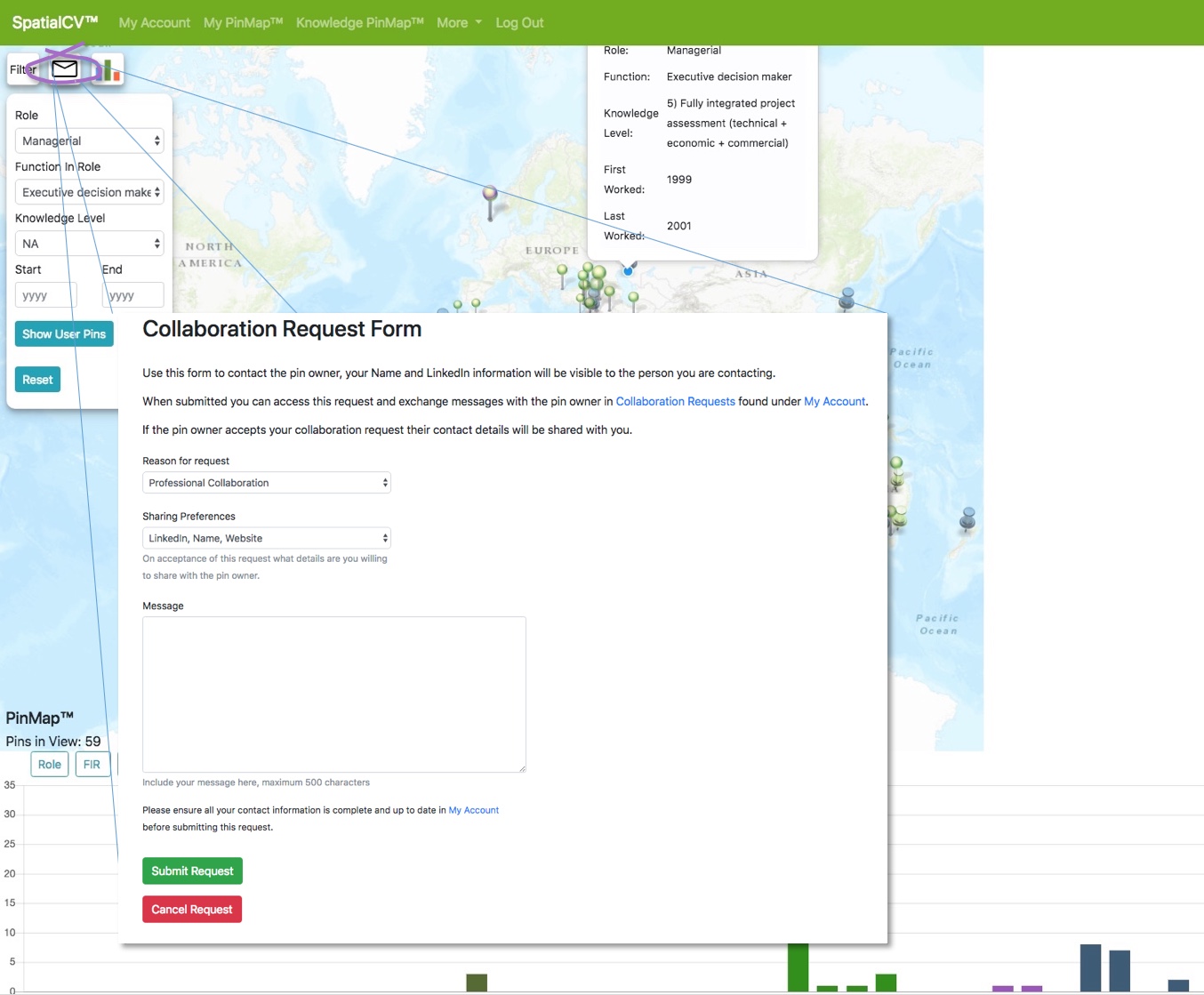SpatialCV™ activity: channeled NETWORKING (new)
Having identified a knowledge holder of interest through profiling, you have anecdotal evidence that the career path that interests you is achievable. To find out how they achieved their career requires a dialogue in confidence.
1. Click on a pin belonging to the knowledge holder of interest, then click on the envelope icon illustrated above. This creates a collaboration request form, which asks you what your interest is in collaborating ( for professional, academic or personal interest or are you interested in recruiting?) and whether you want to share your email or not.
2. Compose an introduction in the message box to your chosen knowledge holder. This is the first contact between you and someone whose identity you don’t know. As the individual proposing a collaboration, submitting the form reveals your identity to your chosen knowledge holder. The initial message should carefully lay out what your intentions are in submitting a request for collaboration. This may result in a series of message exchanges in sequential message boxes before a knowledge holder decides whether to reveal their identity if they are satisfied that the enquiry is genuine or that communicating with the enquirer presents no conflict of interest. Alternatively, the knowledge holder could choose to “decline” if the knowledge holder detects insincerity in the enquiry or the potential for a conflict of interest, effectively closing that network channel.
3. “Submit request” opens a channel for discussion, which may or may not lead to revealing the identity of the knowledge holder. It sends an email from the SpatialCV™ server for the knowledge holder to review, indicating the nature of the enquiry and reveals your identity but not your pins. The knowledge holder may choose not to respond or they may have missed the invitation altogether. If you do not hear anything back from the knowledge holder, the chances are that they are not available for a discussion of the nature that you propose.
4. If you have not heard from the knowledge holder within your window, it may be worth re-profiling to find an alternative.
Adopting a channeled approach to networking is a first on a professional networking site, adopting more of a blind-dating style of communication, not knowing the identity of the knowledge holder. Enquirer or receiver, ultimately, the choice to join a network is yours and yours alone. If this were an exchange using social media, hiding your identity can encourage trolling but with channeled networking, the identity of the enquirer is known (but not their pins), knowledge holders can withhold their identity until they are satisfied that the enquiry is genuine or that communicating with the enquirer presents no conflict of interest. Channeled networking renders dialogue with an unknown party “safe”; withholding your identity as a knowledge holder protects you and your content knowledge until or if you choose to share it. Content knowledge drives your interest but actual knowledge content is tantalisingly unattainable.
To illustrate how this works, content knowledge tells you that knowledge holder “Y” was a wellsite geologist on well-"Z", who conferred a level-5 content knowledge but you have no idea what the actual knowledge content is. In fact uniquely to SpatialCV™, you have no idea whether “Y” is female or male, what ethnicity, nationality, impairment, religious, political or sexual orientation, because none of them is relevant to content knowledge. You don't even know their name. You just know that their verifiable experience has made them what they are today and that is enough to inspire your interest. No other means of profiling focuses so completely on what you know, not who you are. Many talk about a level playing field; SpatialCV™ delivers a level playing field.


